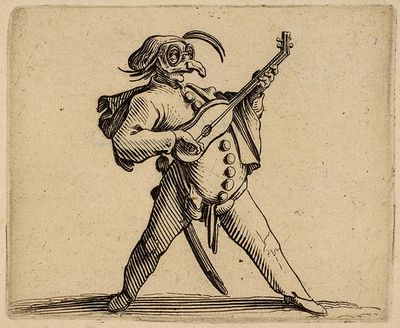Annotation:Punch Alive: Difference between revisions
No edit summary |
m (Text replacement - "garamond, serif" to "sans-serif") |
||
| (3 intermediate revisions by one other user not shown) | |||
| Line 1: | Line 1: | ||
=='''Back to [[{{BASEPAGENAME}}]]'''== | =='''Back to [[{{BASEPAGENAME}}]]'''== | ||
---- | ---- | ||
<p><font face=" | <p><font face="sans-serif" size="4"> | ||
'''PUNCH ALIVE.''' English, Country Dance Tune (cut time). C Major. Standard tuning (fiddle). AB. The melody and dance directions "Longways for as many as will") were printed in the '''Third Volume of the Dancing Master''' [http://www.izaak.unh.edu/nhltmd/indexes/dancingmaster/] (2nd edition) of 1722, which was at that time being printed by John Young, heir to the Playford publishing concerns in London. It was also published by John Walsh & Joseph Hare, rival London music publishers, in their '''New Country Dancing Master, Third Book''' (1728, p. 145). | '''PUNCH ALIVE.''' English, Country Dance Tune (cut time). C Major. Standard tuning (fiddle). AB. The melody and dance directions "Longways for as many as will") were printed in the '''Third Volume of the Dancing Master''' [http://www.izaak.unh.edu/nhltmd/indexes/dancingmaster/] (2nd edition) of 1722, which was at that time being printed by John Young, heir to the Playford publishing concerns in London. It was also published by John Walsh & Joseph Hare, rival London music publishers, in their '''New Country Dancing Master, Third Book''' (1728, p. 145). | ||
<br> | <br> | ||
<br> | <br> | ||
[[File:punch3.jpg|400px|thumb|left|Jacques Callot. Punchinello Figure. French, 1616.]] | |||
The earthy character of Punch, long a mainstay of street and fair puppet shows, was introduced in England from Italy (where it was called ''Pollicinella'' or ''Punchinello'') in the mid-17th century. Pepys noted the arrival of the fat, shrill-voiced, humpbacked creature in his diary in the year 1662. Punch’s nemesis in the plays was his wife, called Joan in the early days, or the Devil, with varying results: sometimes he lost, sometimes he emerged victorious [Simpson & Roud, 2000]. | The earthy character of Punch, long a mainstay of street and fair puppet shows, was introduced in England from Italy (where it was called ''Pollicinella'' or ''Punchinello'') in the mid-17th century. Pepys noted the arrival of the fat, shrill-voiced, humpbacked creature in his diary in the year 1662. Punch’s nemesis in the plays was his wife, called Joan in the early days, or the Devil, with varying results: sometimes he lost, sometimes he emerged victorious [Simpson & Roud, 2000]. | ||
<br> | <br> | ||
<br> | <br> | ||
</font></p> | </font></p> | ||
<p><font face=" | <p><font face="sans-serif" size="4"> | ||
''Source for notated version'': | ''Source for notated version'': | ||
<br> | <br> | ||
<br> | <br> | ||
</font></p> | </font></p> | ||
<p><font face=" | <p><font face="sans-serif" size="4"> | ||
''Printed sources'': Kidson ('''Old English Country Dances'''), 1890; p. 4. | ''Printed sources'': Kidson ('''Old English Country Dances'''), 1890; p. 4. | ||
<br> | <br> | ||
<br> | <br> | ||
</font></p> | </font></p> | ||
<p><font face=" | <p><font face="sans-serif" size="4"> | ||
''Recorded sources'': <font color=teal></font> | ''Recorded sources'': <font color=teal></font> | ||
</font></p> | </font></p> | ||
Latest revision as of 14:36, 6 May 2019
Back to Punch Alive
PUNCH ALIVE. English, Country Dance Tune (cut time). C Major. Standard tuning (fiddle). AB. The melody and dance directions "Longways for as many as will") were printed in the Third Volume of the Dancing Master [1] (2nd edition) of 1722, which was at that time being printed by John Young, heir to the Playford publishing concerns in London. It was also published by John Walsh & Joseph Hare, rival London music publishers, in their New Country Dancing Master, Third Book (1728, p. 145).

The earthy character of Punch, long a mainstay of street and fair puppet shows, was introduced in England from Italy (where it was called Pollicinella or Punchinello) in the mid-17th century. Pepys noted the arrival of the fat, shrill-voiced, humpbacked creature in his diary in the year 1662. Punch’s nemesis in the plays was his wife, called Joan in the early days, or the Devil, with varying results: sometimes he lost, sometimes he emerged victorious [Simpson & Roud, 2000].
Source for notated version:
Printed sources: Kidson (Old English Country Dances), 1890; p. 4.
Recorded sources:
